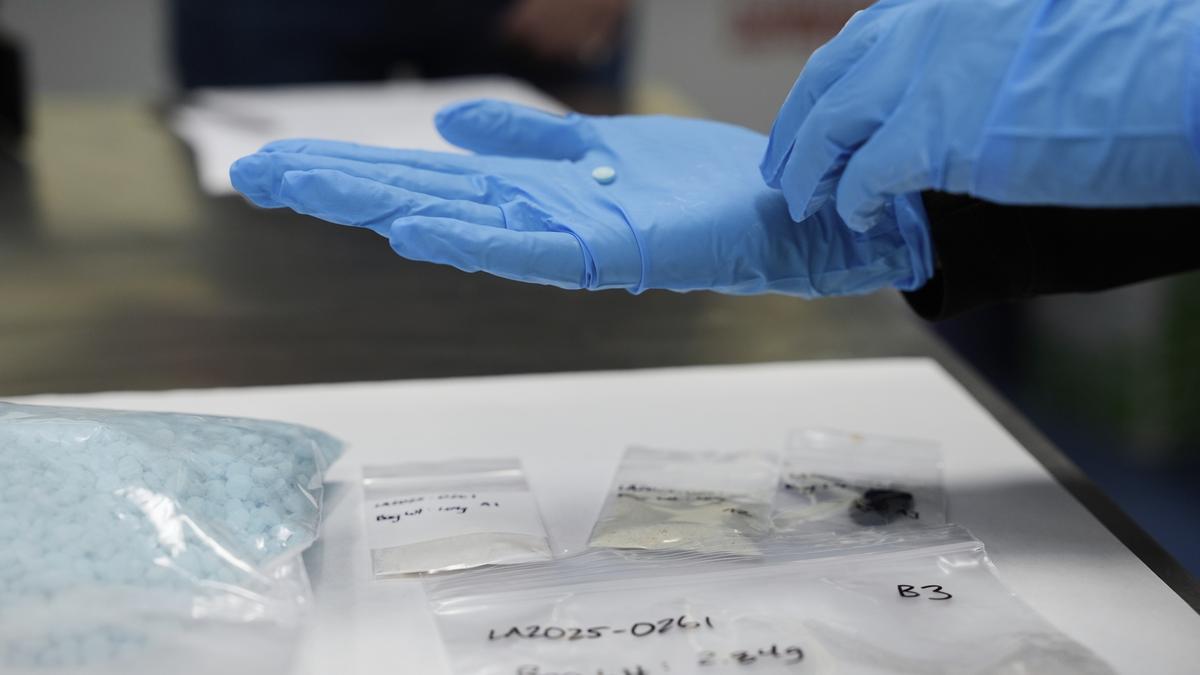Fentanyl Blacklist

- 24 Sep 2025
In News:
The United States has intensified its global campaign against fentanyl, a powerful synthetic opioid responsible for tens of thousands of overdose deaths annually. In its latest narcotics control measures, the U.S. has imposed visa bans on Indian business executives allegedly linked to the trafficking of fentanyl precursor chemicals, reflecting growing scrutiny of global supply chains originating in Asia.
Background: The Major’s List and India’s Inclusion
- In the latest “Major’s List” submitted to the U.S. Congress, President Donald Trump identified 23 countries as major sources or transit hubs for illicit drugs — particularly fentanyl — posing a threat to American citizens.
- The list includes India, Pakistan, China, and Afghanistan, among others. While inclusion does not imply failure in counter-narcotics efforts, it highlights each nation’s role in the production or transit of controlled substances and precursor chemicals.
- Countries such as Afghanistan, Bolivia, Myanmar, Colombia, and Venezuela were categorized as having “failed demonstrably” to meet international drug-control obligations.
Understanding Fentanyl:
Fentanyl was first synthesized in the 1960s for legitimate medical use as a potent painkiller. However, illicitly manufactured variants now dominate the U.S. illegal drug market.
- It is 50 times stronger than heroin, and just 2 milligrams can be fatal, as it suppresses the brain’s respiratory centers.
- Between August 2023 and August 2024, more than 57,000 Americans died of opioid overdoses, primarily linked to fentanyl.
- In 2022, the U.S. Drug Enforcement Administration (DEA) seized enough fentanyl to deliver 379 million lethal doses—enough to kill the U.S. population.
The crisis has been termed the “opioid epidemic”, driving unprecedented public health and security responses in the U.S.
Fentanyl Precursors and the Challenge of Regulation
- Unlike plant-based drugs such as heroin or cocaine, fentanyl is lab-synthesized from chemical precursors like N-phenethyl-4-piperidone (NPP) and 4-anilino-N-phenethylpiperidine (4-ANPP).
- These compounds have legitimate pharmaceutical and industrial uses, complicating global regulatory oversight. Small quantities of these chemicals can yield large volumes of fentanyl, and they are easily concealed in international shipments through mislabelling or false customs declarations.
- This has made it difficult for authorities to distinguish between lawful trade and diversion into illicit production networks.
Global Fentanyl Supply Chain
The global fentanyl network involves multiple countries across different stages of production and distribution:
- China and India are key producers of precursor chemicals, some of which are diverted to illegal channels.
- Mexican cartels synthesize fentanyl using these precursors, convert it into powder or counterfeit pills, and smuggle it into the U.S. through the southwest border.
This multi-tiered chain, combined with e-commerce and courier systems, has created a complex and decentralized trafficking web, challenging traditional interdiction mechanisms.
U.S. Domestic and Global Enforcement Measures
Domestically, the U.S. has expanded DEA operations, seizures, and public health initiatives to counter the crisis:
- Nationwide naloxone distribution to reverse overdoses in emergencies.
- Public awareness campaigns warning of counterfeit prescription pills laced with fentanyl.
- Enhanced treatment and rehabilitation programs to curb addiction and demand.
Internationally, Washington has combined criminal prosecution, trade measures, and sanctions to curb the flow of fentanyl and its precursors.
- In February 2025, additional tariffs were imposed on imports from China, Canada, and Mexico to pressure stronger enforcement; these were later suspended for Canada and Mexico after improved border controls.
- The U.S. has also sought to align global chemical control frameworks through the UN and bilateral agreements.
India’s Position
India, while listed as a “major drug transit or producing country,” has not been accused of state complicity. The issue primarily involves private firms and individuals engaged in illicit chemical exports. Indian authorities are expected to strengthen precursor control mechanisms, enhance customs surveillance, and ensure regulatory compliance within the pharmaceutical and chemical industries.
The episode underscores India’s dual challenge — balancing its role as a legitimate pharmaceutical exporter while preventing misuse of chemical manufacturing capacity.
